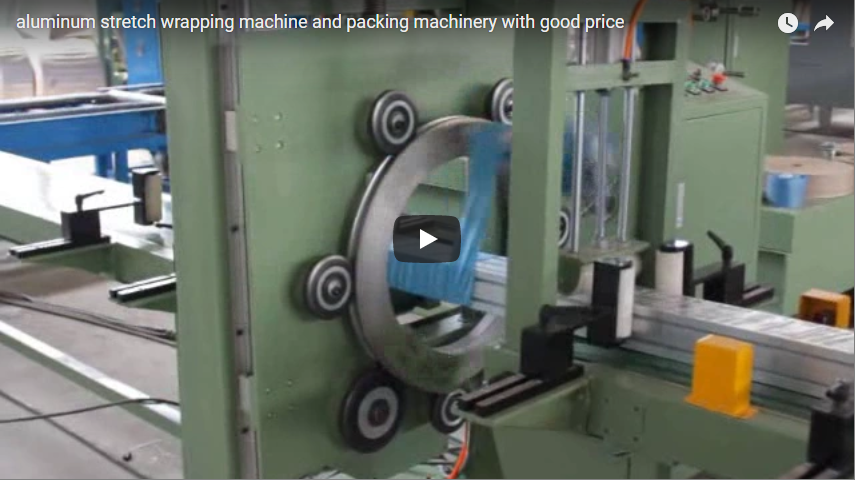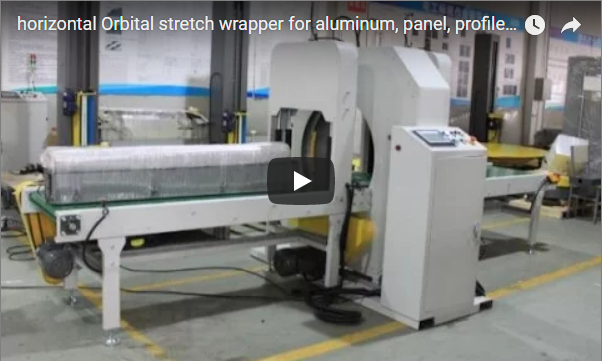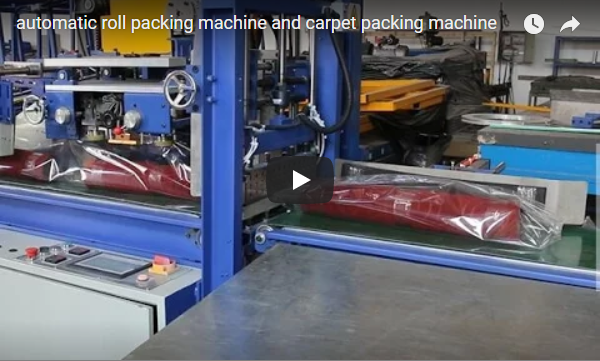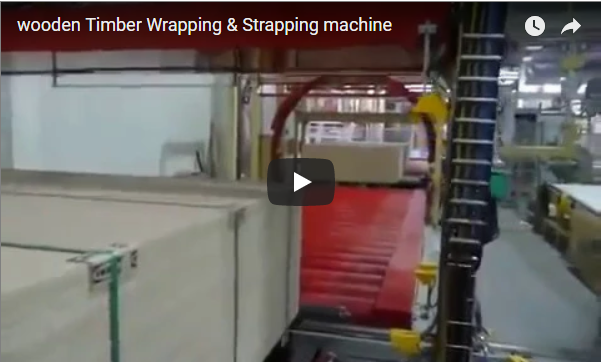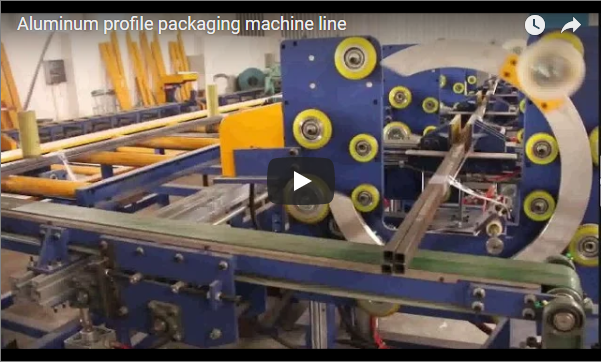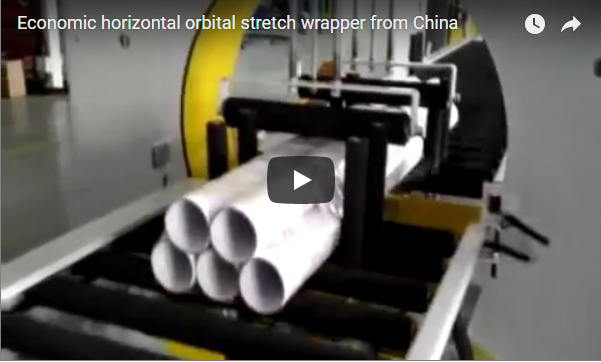Optimizing Packaging Lines: A Technical Deep Dive into the Horizontal Wrapping Machine
In today's fast-paced manufacturing and logistics environments, efficient and reliable packaging is paramount. Horizontal wrapping machines, often referred to as orbital wrappers or flow wrappers depending on the specific type and application, play a crucial role in protecting and unitizing products, particularly those with elongated profiles. This article provides a technical overview of a common type of horizontal wrapper, focusing on its design, components, operational capabilities, and potential enhancements, offering valuable insights for operations seeking to improve their packaging processes. The machine showcased exemplifies a compact and effective solution designed for streamlined integration.
1. Understanding the Horizontal Wrapper: Core Functionality
A horizontal wrapping machine is engineered to apply protective film (typically stretch film) around a product as it moves horizontally through the machine's wrapping ring or area. Unlike vertical wrappers that handle palletized loads, horizontal wrappers excel at securing individual items or bundles such as pipes, lumber, extrusions, doors, windows, textiles, and furniture components. The core process involves feeding the product into the wrapping zone, where a film carriage dispenses and applies the film circumferentially as the product advances.
2. Key Design Features and Components
While designs vary, many horizontal wrappers share common structural and functional elements aimed at efficiency and reliability:
- Compact Footprint: Designed often with space constraints in mind, allowing integration into existing lines without major reconfiguration.
- Wrapping Ring/Arm: The central component housing the film carriage, rotating around the product path to apply the film. Ring speed dictates throughput.
- Film Carriage System: Holds the film roll and includes mechanisms for controlling film tension and pre-stretch (if applicable), ensuring optimal film usage and load containment.
- Conveyor System: Transports the product through the machine at a controlled speed. Roller conveyors are common for supporting elongated items. Belt conveyors may be used for different product types.
- Control System: Ranges from basic button controls for semi-automatic operation to sophisticated PLC (Programmable Logic Controller) systems with HMI (Human-Machine Interface) touchscreens for precise parameter setting, diagnostics, and integration capabilities.
- Safety Features: Standard safety guards, emergency stop buttons, and potentially light curtains or interlocks to protect operators.
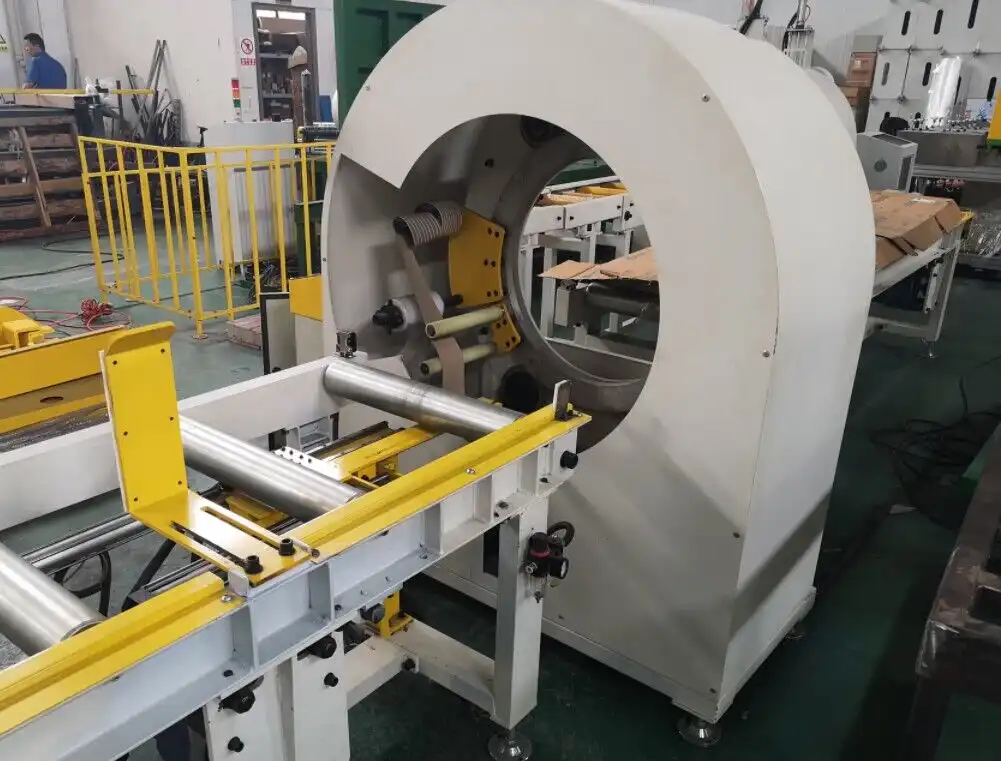
semiauto horizontal stretch wrapper
[Image Placeholder: Insert image of the horizontal wrapper machine here, if available. Alt Text: Horizontal wrapping machine showing wrapping ring and conveyor system.]
3. Technical Specifications Breakdown
Understanding the technical specifications is crucial for selecting the right machine for a specific application. Below are typical parameters for a semi-automatic horizontal wrapper of this class:
- Operational Mode: Semi-Automatic (Manual product feed, automatic wrap cycle)
- Wrapping Speed: Typically 15-60 RPM (Revolutions Per Minute of the wrapping ring), influencing throughput based on product length and required overlap.
- Maximum Product Dimensions (Example):
- Width: 400 mm - 1200 mm
- Height: 400 mm - 1200 mm
- Length: Minimum 500 mm (variable, often unlimited depending on conveyor setup)
- Film Specifications:
- Material: LLDPE Stretch Film
- Width: Typically 100 mm - 500 mm
- Roll Outer Diameter: Up to 250 mm
- Core Inner Diameter: 76 mm (3 inches)
- Control System: Basic Relay Logic or PLC
- Power Supply: 220V/380V, 50/60Hz, 3-Phase (Varies by region and configuration)
- Approximate Machine Dimensions (L x W x H): Varies, e.g., 1800 mm x 1500 mm x 1600 mm (excluding conveyors)
- Estimated Weight: 500 kg - 1500 kg
(Note: These are indicative specifications. Actual values depend on the specific model.)
4. Operational Modes and User Experience
This type of horizontal wrapper often functions in a semi-automatic mode, balancing automation with operator involvement:
- Product Loading: The operator manually places the product onto the infeed conveyor.
- Cycle Initiation: The operator starts the wrapping cycle via a control button or footswitch.
- Automatic Wrapping: The machine automatically feeds the product through the rotating ring, applying the stretch film according to pre-set parameters (e.g., wrap counts at ends, overlap).
- Film Cut & Clamp (Optional/Standard): Upon cycle completion, the film is automatically cut and clamped, ready for the next product. Without this option, manual cutting is required.
- Product Unloading: The wrapped product exits onto the outfeed conveyor for removal.
The design emphasizes simplicity and effectiveness. Ease of film roll changes, straightforward controls, and robust construction contribute to a positive user experience and minimize downtime, making it a reliable "packing partner."
[Image Placeholder: Insert image of the control panel or HMI here, if available. Alt Text: Control panel of the horizontal wrapper showing start/stop buttons and indicators.]
5. Optional Enhancements: Tailoring Performance
To meet diverse packaging needs, several optional features can enhance the machine's capabilities:
- Automatic Film Clamping and Cutting Device: As mentioned, this significantly improves efficiency by automating the final step of the wrapping cycle, providing a clean, consistent finish and eliminating manual intervention.
- Pneumatic Top Press: An air-cylinder-driven press plate descends onto the product during wrapping. This is essential for stabilizing lightweight or unstable bundles, ensuring a tight and secure wrap.
- Pneumatic Side Guides: Adjustable guides driven by air cylinders can help center or contain the product as it enters the wrapping ring.
- Extended Conveyors: Longer infeed and outfeed conveyors can be integrated to handle exceptionally long products or to buffer products before and after wrapping.
- Variable Speed Controls: Allows adjustment of conveyor speed and ring speed via the control panel for optimizing wrap patterns on different products.
6. Applications and Industries Served
Horizontal wrappers are versatile machines utilized across various sectors:
- Building Materials: Wrapping pipes, conduits, timber, insulation panels, siding, metal profiles.
- Furniture: Securing flat-packed furniture, components, assembled items.
- Manufacturing: Bundling extrusions (aluminum, plastic), textiles rolls, carpets.
- Doors and Windows: Protecting finished products from scratches and damage during handling and transit.
- Logistics and Distribution: Unitizing elongated items for easier handling and shipment.
7. Choosing the Right Horizontal Wrapper
Selecting the appropriate machine involves considering:
- Product Characteristics: Size, weight, shape, and stability of the items to be wrapped.
- Throughput Requirements: The number of products needing wrapping per hour or shift.
- Level of Automation: Semi-automatic for lower volumes or variable products, fully automatic integrated lines for high throughput.
- Film Requirements: Type, width, and stretch percentage needed for effective load containment and protection.
- Budget and Space: Balancing initial investment and operational costs with available floor space.
Conclusion
The horizontal wrapping machine represents a vital asset for companies dealing with elongated or challenging product profiles. Offering a blend of simplicity, effectiveness, and potential for automation through optional enhancements like automatic film cutting and pneumatic presses, these machines deliver significant improvements in packaging efficiency, product protection, and load security. By carefully evaluating technical specifications and available features against specific application needs, businesses can integrate a horizontal wrapper that serves as a truly valuable and reliable packaging partner.
For more information on specific horizontal wrapping solutions, visit https://www.fhopepack.com.

